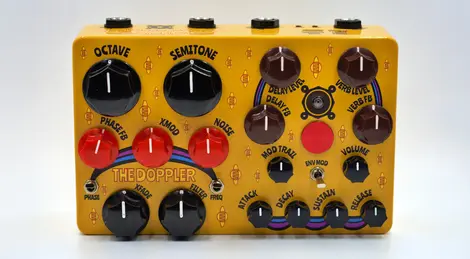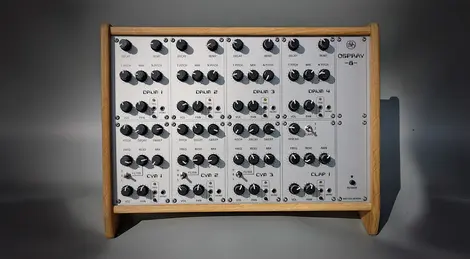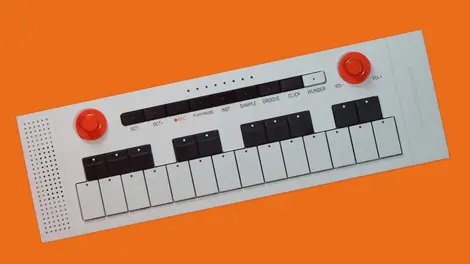Blipblox SK2: The Synthesizer That Bridges Toy and Professional Instrument
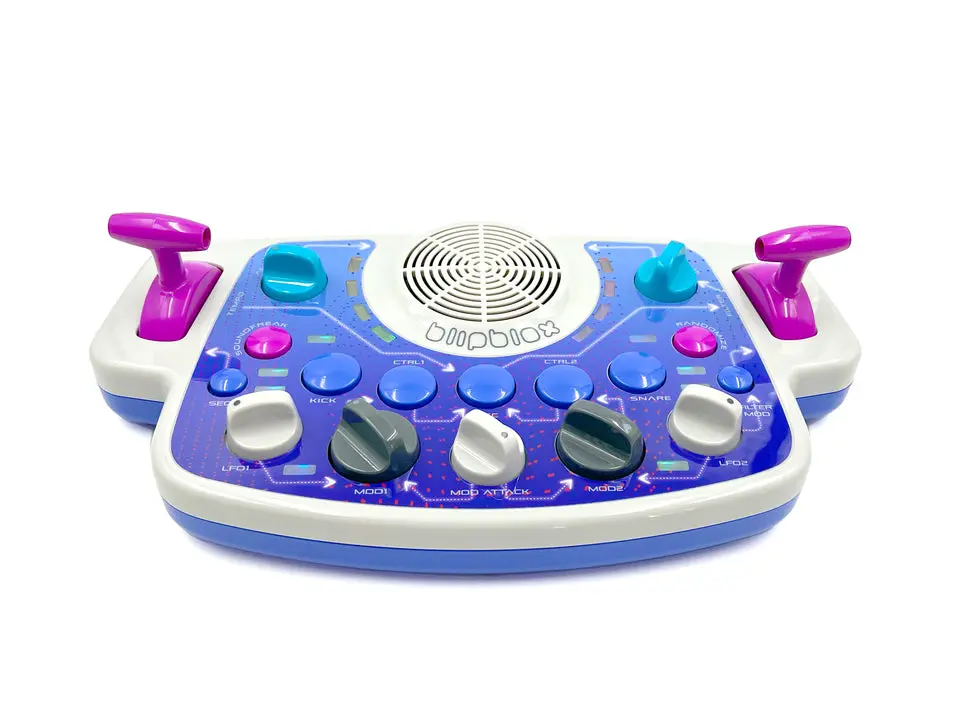
The Blipblox SK2 is a hardware synthesizer with sequencer and drum machine that looks like it escaped from a children's toy store. Despite its bright rainbow colors and safety certification for ages 3+, it contains full synthesis architecture including oscillators, filters, envelopes, and LFOs. It's the kind of device that makes adults slightly embarrassed to admit how much fun they're having with it. And it feels like a genuine toy for your kids too.
Technical Specifications
The SK2 includes 16 oscillator types with different synthesis methods: pulse width modulation, detune, frequency modulation, hard sync, wavetable scan, and wavetable morph. Each oscillator accepts two modulation inputs controlled by MOD 1 and MOD 2 knobs, with modulation sources selected via CTRL 1 and CTRL 2 buttons.
The modulation matrix offers three sources: two LFOs (adjustable speed) and one modulation envelope (adjustable attack time). The filter section provides three types - high-pass, low-pass, and band-pass - with adjustable cutoff frequency and resonance. Filter modulation source is selectable, and filter type is changed by holding the FILTER MOD button.
Built-in content includes 400 melodies and 100+ drum sounds. The sequencer automatically selects melodies when pressing SEQ, with drums toggling on alternate presses. Tempo is controlled by a physical lever, and the wonderfully named SOUNDFREAK button scrambles sequencer notes into delightful chaos.
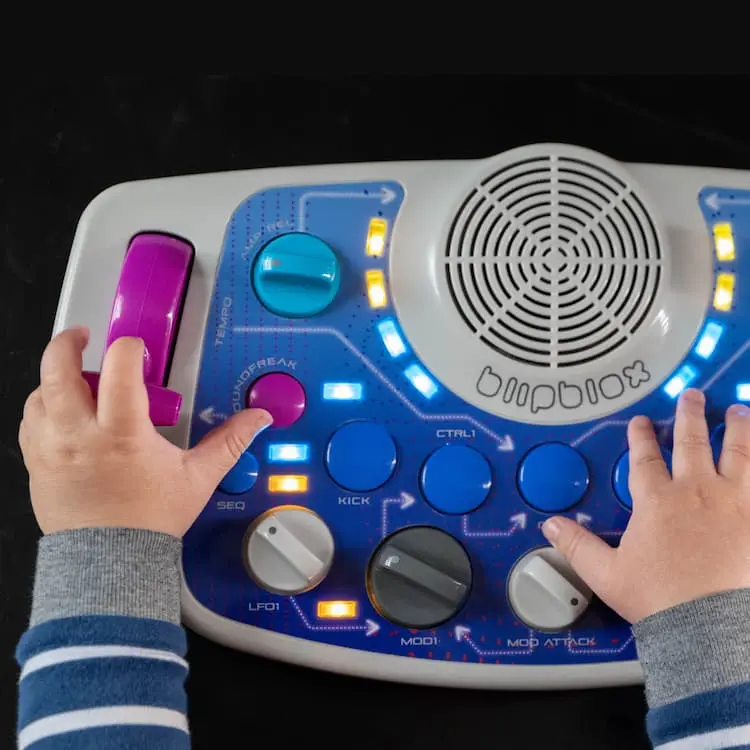
Connectivity and Special Functions
The SK2 includes 5-pin MIDI input (defaults to channel 1 for synth, channel 2 for drums, user-configurable) and 1/4" audio output. MIDI sync is supported - the device responds to MIDI START, STOP, and TEMPO commands for synchronization with external sequencers or DAWs.
Effects include multi-tap stereo delay, adjustable by holding CTRL 1 and moving the filter lever. Filter resonance is controlled by holding CTRL 2 and moving the filter lever. The device features a synth parameter mode (activated by holding KICK + SOUNDFREAK) where LEDs display real-time synthesis parameters instead of the default light show.
Special play modes include drum solo (hold KICK + press SEQ), drum edit mode (hold SNARE + press RANDOMIZE), and sequencer disable (hold FILTER MOD + press SEQ). The unit can be upgraded with new melody and drum packs via MIDI SYSEX transfer.
User Interface and Learning Curve
Control layout includes clearly labeled knobs, buttons, and a tempo lever. The signal flow diagram is printed on the device surface. LEDs provide visual feedback for modulation sources and synthesis parameters. Children can immediately start making music by simply pressing buttons and turning knobs - no instructions needed, just pure playful experimentation.
However, many advanced functions require memorizing button combinations. Examples include filter type switching (hold FILTER MOD), delay adjustment (hold CTRL 1 + filter lever), and various configuration settings that require specific button combinations during startup. The 22-page manual details these combinations, but fluent operation requires practice. For adults who want conscious control over the synthesis engine, this deeper layer offers genuine sound design possibilities.
Power and Configuration
The device runs on 3 AA batteries or USB power (5V DC via included cable). Battery level is indicated by LED color: yellow for low charge, red for insufficient power. Auto-shutdown occurs after 30 minutes of inactivity (configurable).
Configuration settings include auto power-down on/off, automatic drum machine enable/disable, kick drum level adjustment, LED animation modes (four settings including static and off options), volume limiting, and MIDI channel selection (1-16). Most settings require specific button combinations during startup.
Practical Use
The SK2 works immediately upon power-on with no setup required – just press buttons and hear instant music. The randomize button generates new synthesis parameter combinations, while the SEQ button cycles through built-in melodies. For users wanting deeper control, the manual details the modulation matrix, filter types, and button combinations needed to access all functions.
The device successfully serves multiple audiences: children get an engaging toy that actually teaches synthesis fundamentals, while adults discover a genuinely useful sound source with character you won't find in software plugins. Yes, you might feel silly twisting rainbow-colored knobs at first, but the sounds it produces quickly overcome any aesthetic concerns. MIDI connectivity allows integration with serious studio setups, where its playful appearance often becomes a conversation starter.




